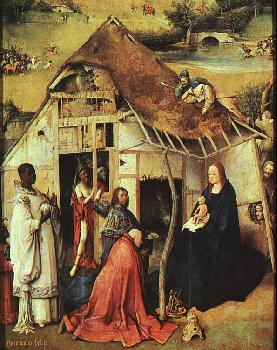
"Epiphany Triptych”, Hieronymus Bosch, 1510
Hieronymus Bosch, 1450-1516, one of the Dutch famous artists in art history painted one of his most famous paintings, the triptych "The Garden of Delights", in 1510-15The left art panel, the more recognizable of the paintings in terms of subject matter, clearly shows Jesus Christ introducing Eve to Adam in the Garden of Eden.
Definitions of Bosch’s art differ greatly. Some think his paintings are pornography while other observers think he was a religious teacher and a fanatic.
Fray Jose de Siguenza, 1544? - 1606, explained the artwork on the left panel of Bosch's painting. God put man into paradise and commanded them as a test of obedience and faith, not to eat from the tree of the knowledge of good and evil. Satan deceived man and they ate the forbidden fruit. They were immediately expelled from the garden of paradise.
Following the theme of Biblical scripture Hieronymus Bosch seems to describe in the central art panel the decadence of Earth outside the Garden of Eden that is the real world we live in. There are erotic and bizarre sexual acts everywhere, a result of and consequence of the original sin.
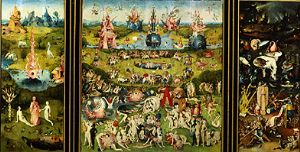 The fruit and the eating of the fruit, a symbol of pleasure, may actually represent and symbolize the unending repetition of the original sin.
The fruit and the eating of the fruit, a symbol of pleasure, may actually represent and symbolize the unending repetition of the original sin.
Bosch paints signs of evil in the central panel. Crows surround the central fountain of life, a symbol for magicians and non-believers. An owl is hidden inside a hole in the fountain symbolizing more evil and sorcery.
Hieronymus Bosch was a stern moralist and intended his art to be sermons. This might be the reason there is no pictorial evidence of any possibility for salvation. Man is doomed to repeat the same sins over and over again until he ends up in Hell. The wages of sin therefore is Hell.
”Hell” is the title and the subject represented in third panel painting on the right. It is dark, demon tormented, and burning in the upper one third of the painting.
Much of the imagery in Hieronymus Bosch’s art could have been influenced by alchemy, an early form of chemistry with philosophical and magical associations. The main focus of alchemy in the Middle Ages was to distill gold from common metals and in the process discover an elixir of perpetual youth. It is possible Bosh was familiar with alchemy treatises of the time through his father-in-law, an accomplished pharmacist.
If Hell is damnation then music in Bosch’s time was partly responsible. The art of “Hell” pictures one man crucified on a harp and another suffering the same fate on another musical instrument. Symbols are everywhere. The ear with the severing knife seems to relate to a biblical reference “if your eye offends you pluck it out”. If your ear offends you related to the evil of music, cut it off. Other symbols are rats are said to represent lies and dead fish representing past happiness.
Here in Hieronymus Bosch’s famous tryptic paintings in art history, he seems to be saying that taken all together, humanity left to its own devices is doomed from the beginning. Other famous artists of the Netherlands are Jan van Eyck, Rogier van der Wyden, and Hugo van der Goes.
To view the entire gallery of Hieronymus Bosch paintings, click here.
Click on the graphics below to increase graphic sizes. At the same you time can also view an opportunity to purchase a poster or painting reproduction.
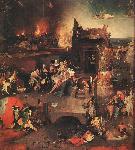
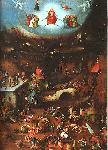
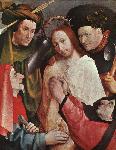
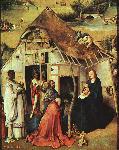
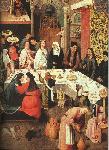
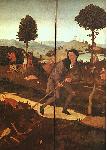

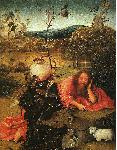
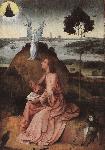



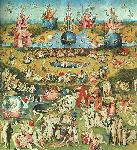











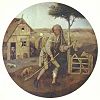


|